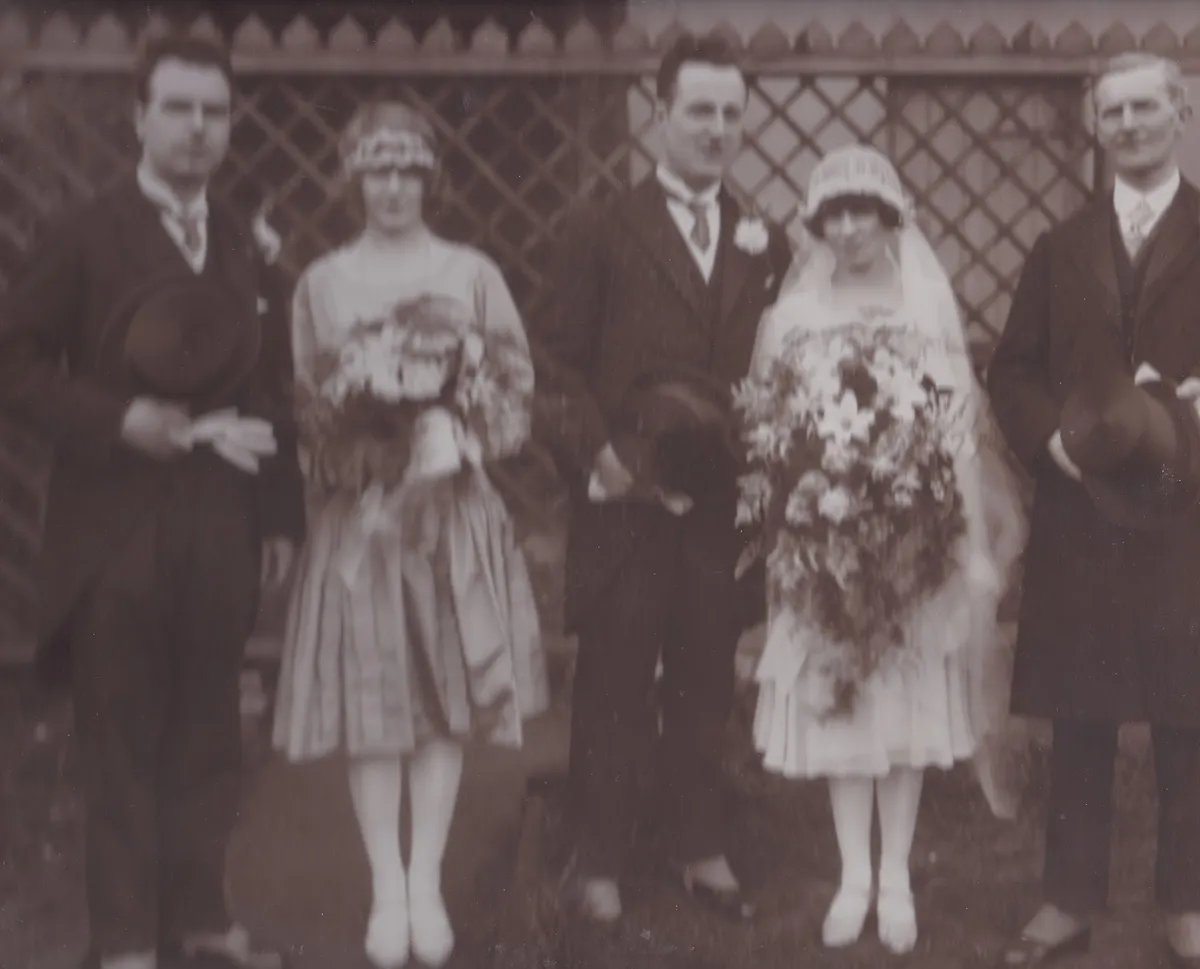Ruth Jones is the co-creator and star of the popular BBC comedy Gavin & Stacey, inspired by her roots in Wales.
“I will forever want to play Welsh characters and write for Welsh characters because it’s a passion I have to share the wonderful characters in Wales,” she says.
So when she appears on Who Do You Think You Are?, it’s obvious that Ruth will discover her Welsh family history. She returns to the town of Porthcawl in South Wales, where she grew up, to visit her mother, Hannah. Ruth is keen to find out more about the families of her grandfathers, who both died before she was born.
Hannah shows Ruth a family bible which lists Ruth’s 2x great grandfather, David Jenkins, and his nine children. She also has an old photograph of nine people on a beach, who Ruth thinks might be David’s family. She notices that the picture has the stamp of a photography studio in New Quay.
Finally, Hannah shows Ruth David Jenkins’ baptism record. This reveals that his father was Evan, a mariner, and he was born in Llanllwchaiarn, near New Quay.
Ruth travels to New Quay and meets maritime historian Sue Passmore. Sue shows Ruth crew lists in which Evan is named as the second mate of the ship Eleanor. The ship made local voyages between Welsh ports, transporting trade goods. By 1838, Evan had risen to be a captain and shipowner, and in 1846 he purchased the land to build his own house, which is still there today.
Ruth is delighted to visit the house and see the view out to sea that Evan and his family would have known. But Sue then shows her Evan’s death certificate, which reveals that he died suddenly of apoplexy while on a voyage to Liverpool in 1847. However, Ruth is comforted that Evans’ 19-year-old son David is also listed on the crew list and would have been with him when he died.
Ruth is thrilled to discover that David was also a captain, and he travelled on voyages as far as East Indies, Burma, Mauritius and the Red Sea: “I’ve been lucky enough to go on some nice holidays, thank you very much, but what he must have seen and he must have learned, it makes me realise how little I do know about life.”
Ruth meets fashion history expert and regular Who Do You Think You Are? Magazine contributor Jayne Shrimpton to find out more about the photograph that she thinks is of David’s children. Jayne says that the clothes they’re wearing are from the early to mid 1880s, making it of the right time period to be of the Jenkins siblings.
However, Ruth is sad to discover that the photograph captures a brief period when the siblings were together. One sister, Hannah, died in 1892, and a brother, Thomas, in 1893. Ruth goes to visit the family grave in St David’s churchyard in Llanarth and reflects on what she’s learned: “It’s like as if there was this closed door, which I never thought to open, and now I’ve opened it and gone through and found out all this lovely information about that side of my family.”
Next, Ruth wants to find out about the other side of the family and her father’s father, Henry Richard Jones. She goes to see her brother Julian, who shows her the love letters Henry Richard wrote to his future wife, Anita, while serving in the Navy during World War One. Ruth is surprised by the letters’ romantic tone, and even a mention of the couple being “asleep in one another’s arms”!

Ruth notices that a later letter is on the notepaper of the Neath and District Medical Aid Association and goes to meet historian Dr Steve Thompson. Ruth learns that her grandfather was responsible for distributing medicine in the town and was also the secretary of the local Medical Aid Society.
Before the NHS was founded in 1948, the Medical Aid Associations were popular in South Wales as a way of providing free at the point of use healthcare to ordinary working people.
Henry Richard was also involved in the birth of the NHS. Steve shows Ruth his correspondence with Aneurin Bevan, the health secretary who founded the service, arguing for Medical Aid Societies to be included in the new system. Bevan rejected Henry Richard’s arguments but praised the societies, noting: “You have shown us the way and by your very efficiency you have brought about your own cessation.”
Henry Richard tried to find work in the new NHS, but his application was rejected. However, he spent his last years working at The Rest, a convalescent home in Porthcawl. When Henry Richard died, a local newspaper article described him as “almost a legend in his own lifetime” for his dedication to medical aid to his fellow men and women.
Ruth finishes by saying: “I am so comforted to find my journey ending where my life pretty much began and where I grew up in this glorious, glorious town of Porthcawl. It’s been wonderful.”
Rosemary Collins is the features editor of Who Do You Think You Are? Magazine









